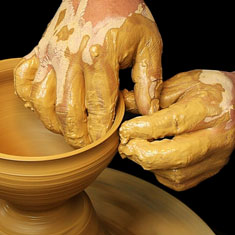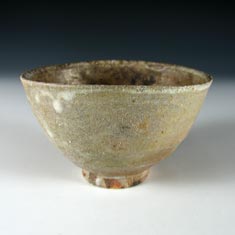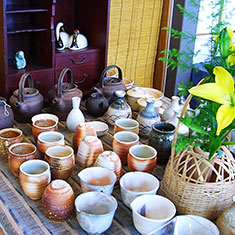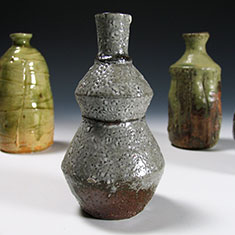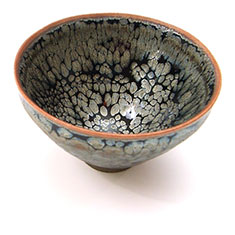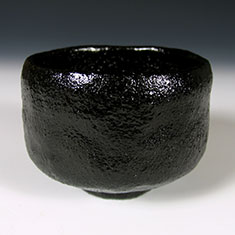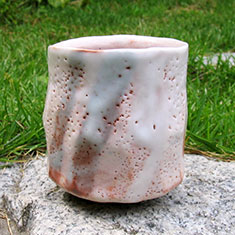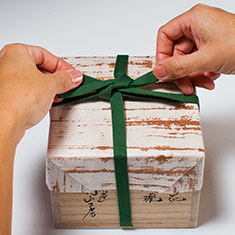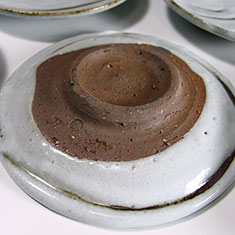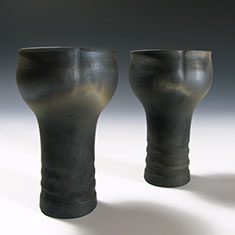When a tea ceremony bowl (chawan) is used over many years, the compounds naurally found in green tea will form a patina on the surface. At first glance, one might think that it appears dingy and not quite the same as when it was new. Over time, though, tea ceremony bowls will take on a beautiful sense of age and history.
The cracks in the glaze, formed naturally while cooling in the kiln, will deepen in color and form intricate mosaics; the patina will become a beautiful gradation of various colors, and a rich luster will appear over smoother areas. In the same way that antique wood or old copper is considered beautiful in the West, the same can be said for the changing character of chawan.
Washing Tea Ceremony Bowls
Tea ceremony bowls are normally soaked in warm water before use so that whipped green tea (matcha) doesn't sink in too quickly. Such preparation isn't necessary for porcelain tea bowls or those with uniform overglazes such as celadon or tenmoku.
Afterwards, tea bowls are rinsed with water, wiped clean with a cloth, and then left out to dry naturally. They are not usually washed with soap and never cleaned in automatic dishwashers.


